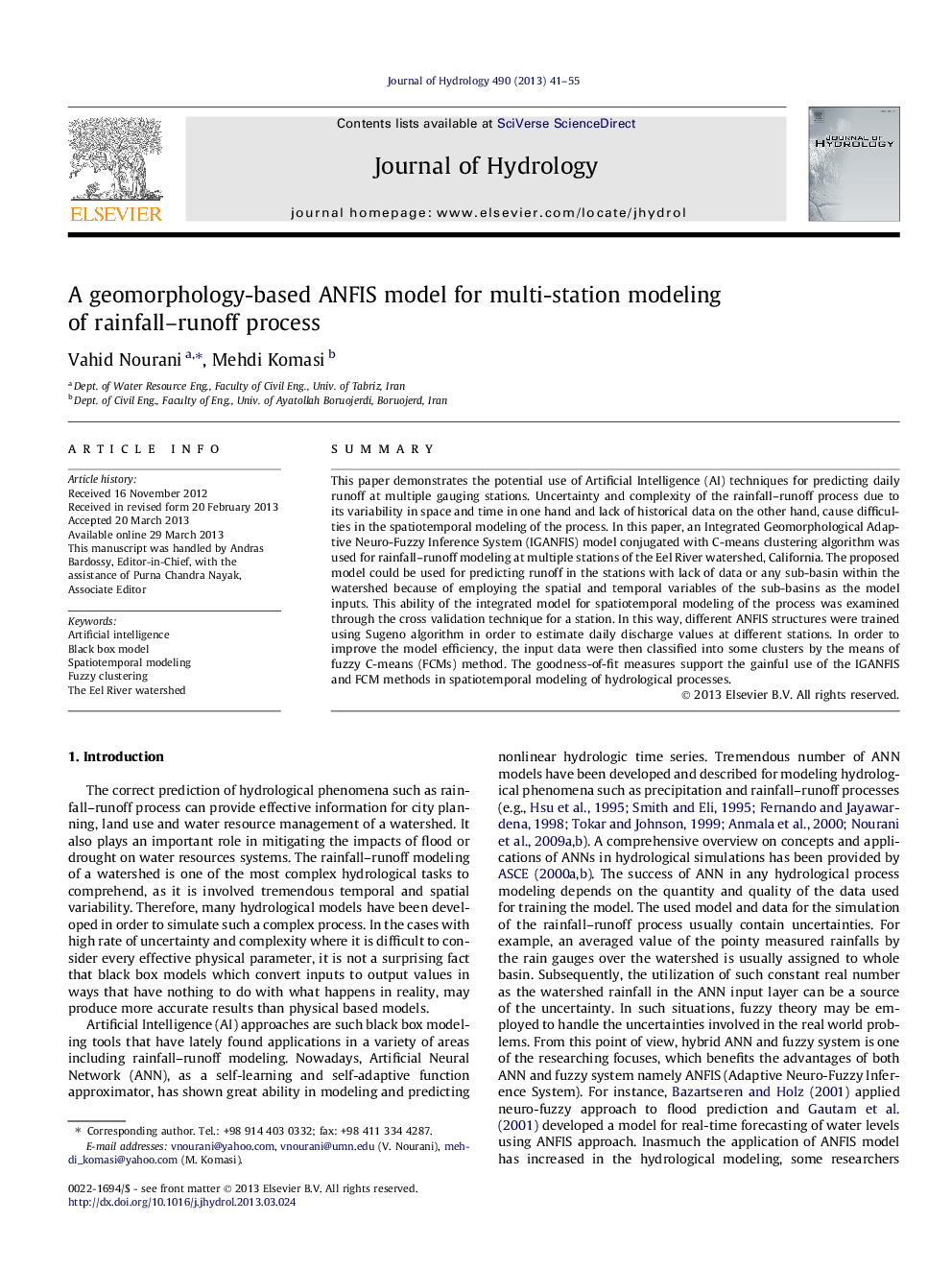| Article ID | Journal | Published Year | Pages | File Type |
|---|---|---|---|---|
| 4576288 | Journal of Hydrology | 2013 | 15 Pages |
•We present integrated geomorphology-based ANFIS model for rainfall–runoff modeling.•In addition to temporal variables, geomorphic parameters are imposed to the model.•We examine model for spatiotemporal simulation of runoff at different stations.•Imposing antecedent values of runoff to input layer increases the model performance.•Fuzzy-based clustering technique improves the efficiency of the model.
SummaryThis paper demonstrates the potential use of Artificial Intelligence (AI) techniques for predicting daily runoff at multiple gauging stations. Uncertainty and complexity of the rainfall–runoff process due to its variability in space and time in one hand and lack of historical data on the other hand, cause difficulties in the spatiotemporal modeling of the process. In this paper, an Integrated Geomorphological Adaptive Neuro-Fuzzy Inference System (IGANFIS) model conjugated with C-means clustering algorithm was used for rainfall–runoff modeling at multiple stations of the Eel River watershed, California. The proposed model could be used for predicting runoff in the stations with lack of data or any sub-basin within the watershed because of employing the spatial and temporal variables of the sub-basins as the model inputs. This ability of the integrated model for spatiotemporal modeling of the process was examined through the cross validation technique for a station. In this way, different ANFIS structures were trained using Sugeno algorithm in order to estimate daily discharge values at different stations. In order to improve the model efficiency, the input data were then classified into some clusters by the means of fuzzy C-means (FCMs) method. The goodness-of-fit measures support the gainful use of the IGANFIS and FCM methods in spatiotemporal modeling of hydrological processes.
